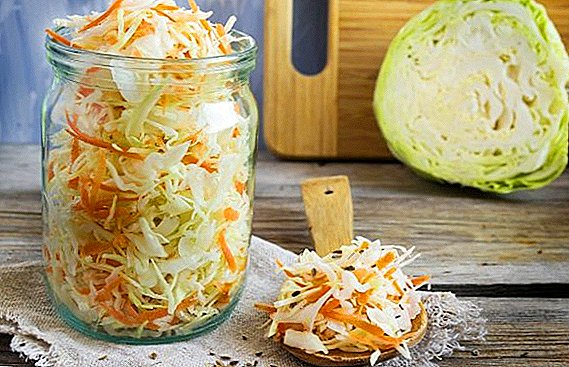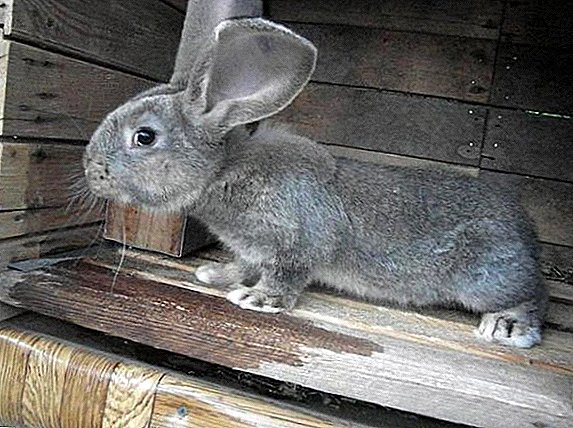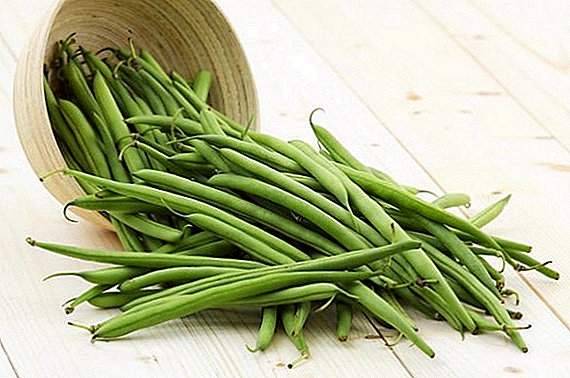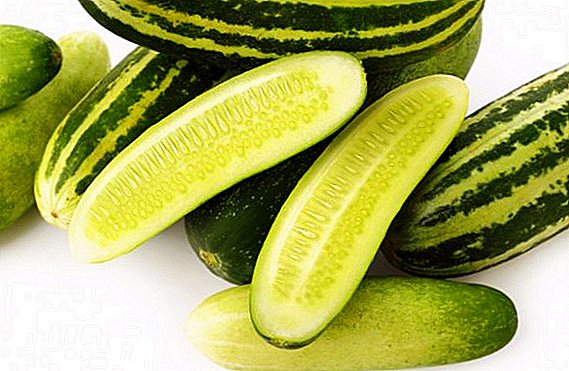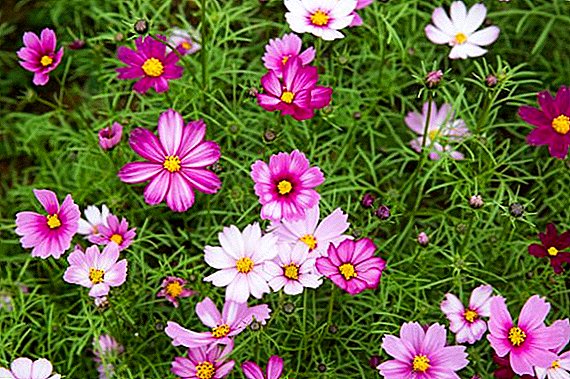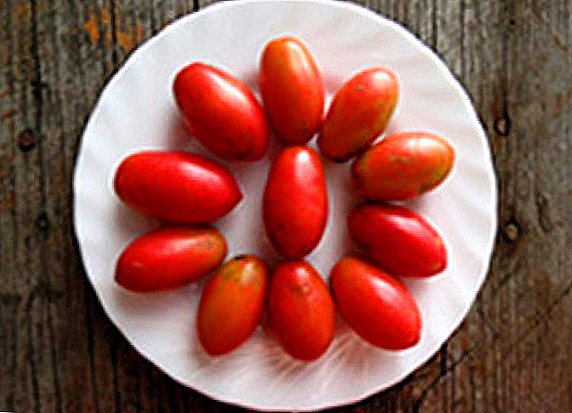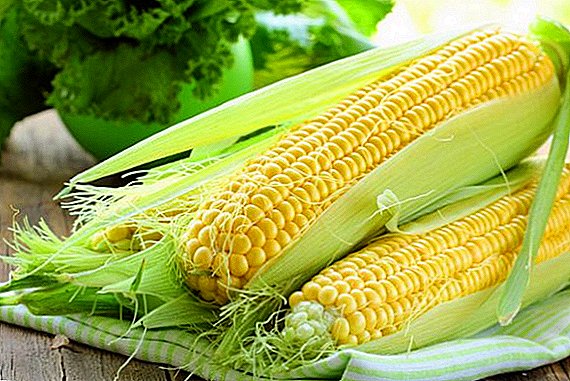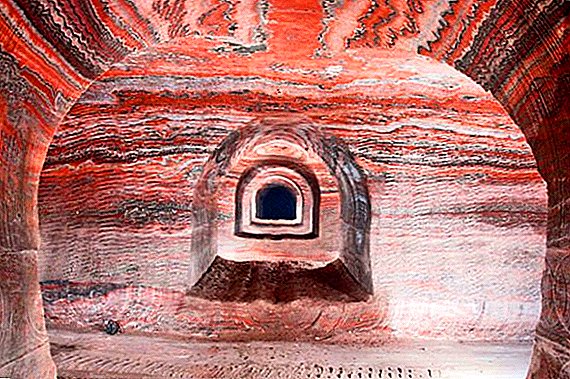 The main components that are necessary for each plant are potassium, nitrogen and phosphorus. They make up complex supplements for the enrichment of the soil, but each one is separately used to compensate for the deficiency of one or another substance.
The main components that are necessary for each plant are potassium, nitrogen and phosphorus. They make up complex supplements for the enrichment of the soil, but each one is separately used to compensate for the deficiency of one or another substance.
This article will tell all about potash salt - what it is, what potassium fertilizers are, their significance for plants, how potassium salt is mined, how it is used in agriculture, what gives potassium to plants and signs of its lack.
What is potassium salt
 Potassium salt - it is a mineral resource belonging to a non-metallic group, easily soluble salt in the form of chemogenic sedimentary rocks. Potassium salt is a raw material for the chemical industry for the production of potash fertilizer and is a mixture of sylvinite, kainit and potassium chloride.
Potassium salt - it is a mineral resource belonging to a non-metallic group, easily soluble salt in the form of chemogenic sedimentary rocks. Potassium salt is a raw material for the chemical industry for the production of potash fertilizer and is a mixture of sylvinite, kainit and potassium chloride.
Salt crystals are formed due to evaporation and then cooling the brine of potash ponds. In nature, potash salt is deposited with lenses or layers near the occurrence of rock salt.
Did you know? In a sign of friendship in ancient Rome, each guest was brought salt, and in India the expression "I eat his salt" means "it contains me, and I owe it".
Potash salt mining
There are quite a lot of potash salt deposits, and they are available in many countries of the world. The largest deposits of potash salt are in Canada, Russia, Belarus, Germany, USA, India, Italy, Israel, Jordan, Great Britain, China and Ukraine.
The largest deposits of potash salt in Ukraine are the Stebnikovskoye and Kalush-Golinskoye deposits, in Russia - the Perm Krai (Berezniki), and in Belarus - the city of Soligorsk.
Extraction of potash salt, as well as stone, is performed by the mining method. This is very dangerous, because the salt layers are characterized by their instability and fragility, which leads to frequent collapses in the mines. 
The extracted natural salts are converted by mechanical processing into the so-called raw potash salts, of which there are only two types - Cainites and sylvinites. So not very concentrated layers of salt are processed. Rich breeds are processed mainly in chemical plants.
Did you know? Many nations had the custom to “salt” newborns in order to protect them from the evil spirits associated with insomnia, diseases, and the whims of children.
Where is potassium salt used in agriculture
Potassium salt is widely used in the national economy: and in the production of leather and paints, and in pyrotechnics, and in the chemical industry, and in electrometallurgy, and in photography, and in medicine, and in the production of glass and soap, but the use of potassium salt in agriculture as a fertilizer is most known. Potassium chlorides are simply indispensable for the normal growth and fruiting of plants.
There are several varieties of potash fertilizers based on potash salt: potassium sulphate, potassium magnesia, potassium chloride, potash saltpeter, potash salt, kainit.
 In potassium chloride contains 50-60% of potassium and an admixture of chlorine, a significant amount of which is harmful to fruit trees. Therefore, it is necessary to deposit it under crops sensitive to chlorine beforehand (especially for berries and strawberries) so that chlorine is washed into deeper layers of the soil.
In potassium chloride contains 50-60% of potassium and an admixture of chlorine, a significant amount of which is harmful to fruit trees. Therefore, it is necessary to deposit it under crops sensitive to chlorine beforehand (especially for berries and strawberries) so that chlorine is washed into deeper layers of the soil.
Potassium sulphate - the most optimal of potash fertilizers for fruit and berry crops. It does not contain harmful impurities of sodium, magnesium and chlorine.
Potassium salt represented by a mixture of potassium chloride with sylvinite, and it is recommended to use it only for autumn application as the main fertilizer for digging. The rate of application to the soil of potassium salt is 30-40 g per square meter. 40% potassium salt is contraindicated as a fertilizer for berry crops. Potassium salt is especially effective when it is applied as a top dressing for beets.
Potassium nitrate used for feeding plants during the ripening of their fruits and for greenhouse crops.
Kalimagneziya suitable for feeding plants that are sensitive to chlorine and that consume a lot of magnesium along with potassium (flax, clover, potatoes).
Wood ash It is considered the most affordable mineral fertilizer, which contains the main macronutrients (phosphorus, potassium, magnesium, calcium). Ash is brought in at any time of the year. Ash is very useful as a top dressing for root crops, potatoes, cabbage, currants and other crops.
 All potash fertilizers are readily soluble in water. There are various ways to apply potash fertilizer to the soil. Under all fruit and berry crops in open ground, it is best to bring them in the fall under the digging as the main fertilizer.
All potash fertilizers are readily soluble in water. There are various ways to apply potash fertilizer to the soil. Under all fruit and berry crops in open ground, it is best to bring them in the fall under the digging as the main fertilizer.
Potash fertilizers can also be applied to moist soils in early spring. Regarding when it is better to make potash fertilizers in a protected ground, this can be done when planting seedlings and root dressings. The best result is achieved when applying these fertilizers in the fall.
Potassium fertilizers are often used in conjunction with calcium fertilizers or lime, because they are endowed with high acidity. A lot of potassium makes grapes out of the soil, so it should be fertilized with potassium-containing fertilizers annually.
You can not make fertilizer with chlorine for tomatoes and potatoes, they impair the taste and reduce the starchiness of potatoes.
Effect of potassium on plants
Potassium is one of the most important elements of mineral nutrition for plants. Properties of potassium are very diverse:
- It normalizes the metabolic processes in the plant's body and thus increases their resistance to drought. If potassium is not enough, then the plants are more wilted.
- Potassium is involved in nitrogen and carbohydrate metabolism, in photosynthesis and has a positive effect on the formation of organic acids and oxidation processes. If the plant lacks potassium, then protein synthesis is inhibited, and the metabolic process is disturbed as a result.
- Increases frost resistance of plants and helps in the formation of immunity to various diseases.
- It activates enzymes involved in the metabolism of carbohydrates, and contributes to greater potato starchiness and sugar content of beets and other root crops.
- It gives stability and strength to plants due to the active development of fibers. Because of the lack of potassium, the reproductive organs of plants are inhibited, and as a result, the buds of inflorescences slowly form, the grains do not develop, and germination decreases.
- Improves cellular metabolism.
- Helps to convert monosaccharides to poly-and oligosaccharides.
- Promotes rich flowering and full fruiting.
- It contributes to the harvest with high taste and increased preservation.


Did you know? The first potassium was discovered by the English chemist Davy and gave him the name "potash", and the name "potassium" was suggested in 1809 by L.V. Gilbert. In nature, potassium can only be found in seawater or minerals.
Signs of potassium deficiency in plants
Signs of a shortage in potassium plants are:
- The leaves are covered with rust-colored spots.
- The extinction of the edges and tips of the leaves.
- The shape of the stem is curved, it slowly develops and becomes pale in color.
- The root system is formed poorly, which subsequently affects the yield. The fruits will be small and loose.
- Plants are subject to various diseases.

Important! Different plants have a different need for potassium. Sunflower, potatoes, beets, cabbage, buckwheat and fruit trees need this element the most.
Soil overflow with potassium component
The structure and characteristics of the soil vary the potassium content in it. It is best to keep potassium heavy soils (clay, loam), in which the content of the useful element is 3%. In light soils (sandy and sandy) it is much less, not more than 0.05%. There is no need to feed this type of only salt marshes and partly black soil.
Important! Peaty soils are the poorest in terms of potassium content.The maximum amount of potassium is in the upper soil horizon, but a large amount of the element cannot be absorbed by plants, because it is part of poorly soluble substances. And only 10% of potassium is available for absorption.

That is why, in order to increase the yield, the deficiency of nutrients needs to be filled with potash fertilizers. They dissolve well in water, and potassium becomes readily available for plant crops.
Potash fertilizers - one of the main mineral fertilizers used in agriculture. Timely application of top dressing will allow you to get a generous harvest and protect yourself from many pests and diseases.



